McKay Lodge Conservation Laboratory recently completed the restoration of several military monuments for the National Park Service at the Vicksburg National Military Park in Vicksburg, Mississippi.
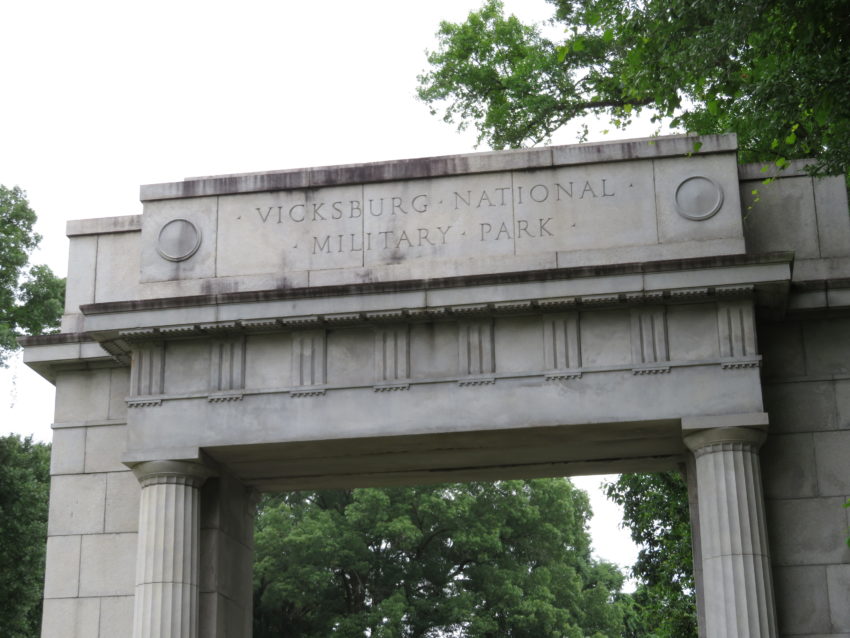
For nearly forty-seven days, the Battle of Vicksburg raged in the summer of 1863 on both land and water. The city of Vicksburg, Mississippi was the last stronghold of the South during the Civil War, and it fell into Union hands on July 4th. The dead and wounded were in the tens of thousands. The Vicksburg National Military Park remembers this fateful siege with bronze and stone monuments and memorials over several square miles which includes the original battlefield.
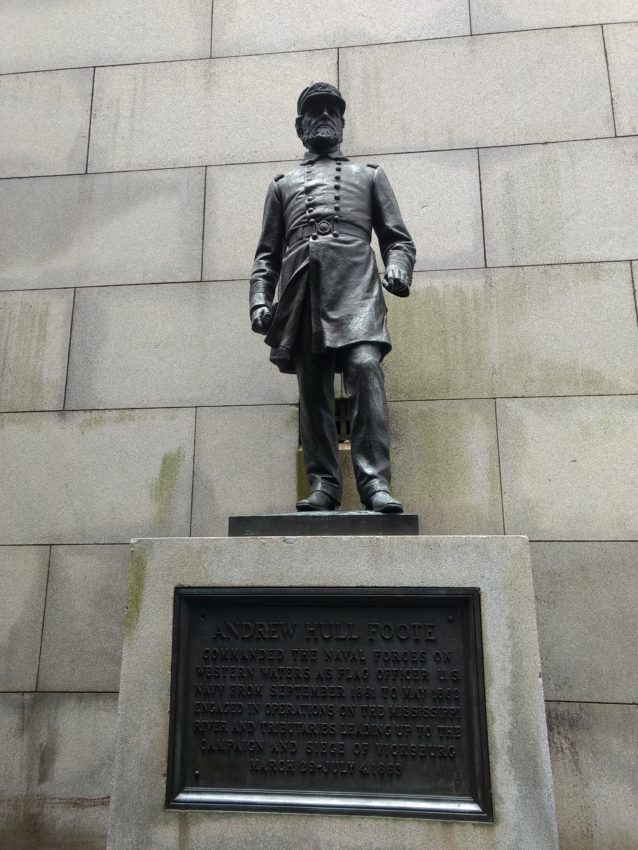
Despite routine maintenance and care, however, it is nearly impossible to combat over zealous visitors who accidentally cause damage by climbing on the sculptures and monuments to outright vandalism. Over the years a number of the memorials and sculptures were damaged. Bronze figures had swords, parts of weapons, hanging straps, and spurs missing and their horses were also missing bits and reins.
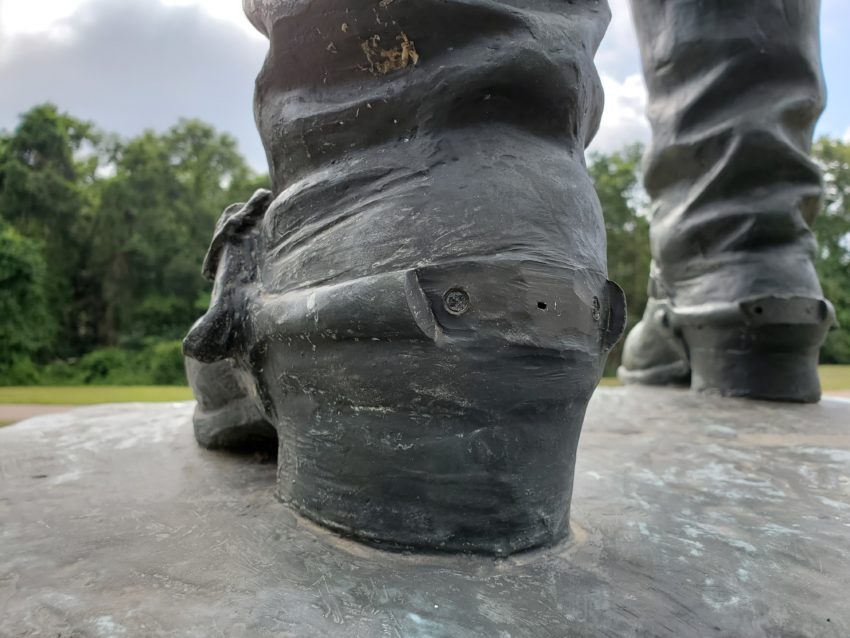
The project began with an assessment of six figures by Thomas Podnar, Senior Conservator of Sculpture, Historic Monuments, and Fountains of McKay Lodge Conservation Laboratory, who developed a treatment plan for the restoration of the military monuments in Vicksburg.

The treatment plan involved returning to Vicksburg and taking molds of existing components on the sculptures. Silicone rubber molds were taken of swords, reins, buckles, and other accoutrements so they could be used to cast new parts in bronze. Back at the lab, Conservator Podnar used the molds taken onsite as well as made additional molds in the McKay Lodge Conservation Lab just outside of Cleveland to create wax positive molds.
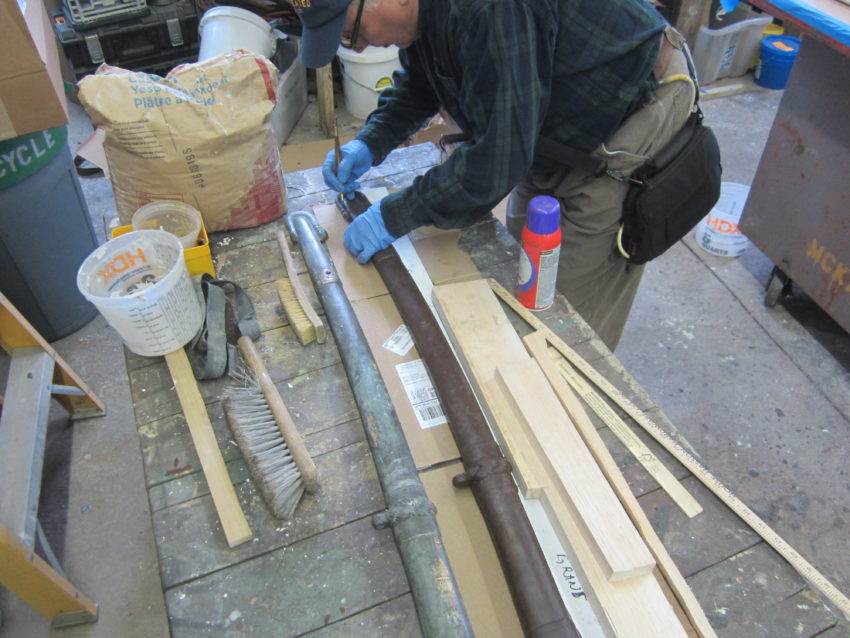
The molds were then cast in bronze at Studio Foundry in Cleveland, Ohio. Back at the McKay Lodge Conservation lab, the different components were finished to a final surface.
Jim Gwinner, Conservator of Public Art and Sculpture, and Christina L. Simms, Conservator of Objects and Sculpture, then transported the materials to perform the final steps of the restoration of the military monuments at the Vicksburg National Military Park. Coincidentally, this conservation journey began on May 18, 2020, exactly 157 years later from when the Battle of Vicksburg started on May 18, 1863.
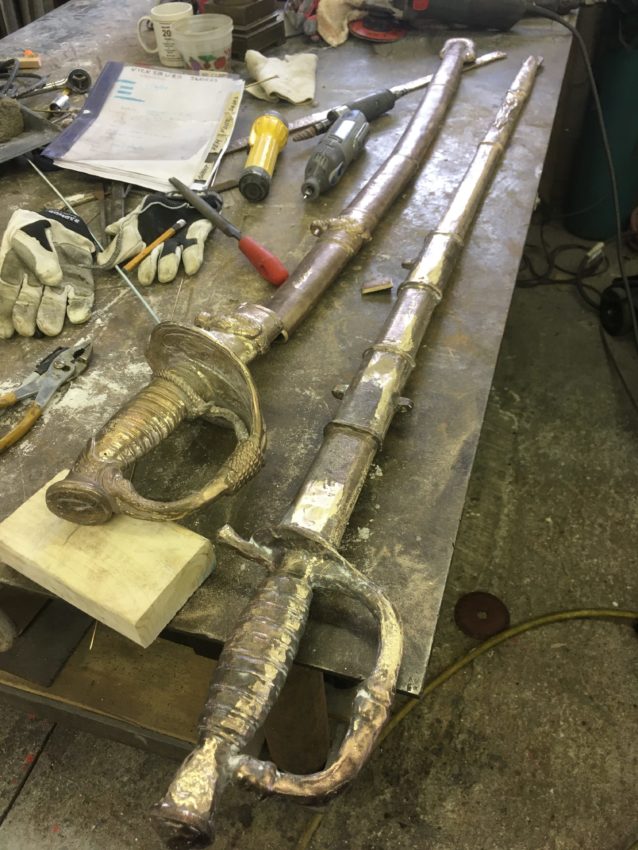
Conservators battled the heat and humidity of Mississippi in the summertime, fire ants, and the challenges of working onsite; it was certainly no comparison to the experience of the soldiers who fought and died on the rolling hills of Vicksburg. Though now a manicured park, it became a graveyard to many that fateful summer.
The restoration of the military monuments began with none other than Union General (later President) Ulysses S. Grant. The bronze sculpture, featuring Grant on horseback, sits atop a nearly vertical grass-covered hill on a regal granite base.
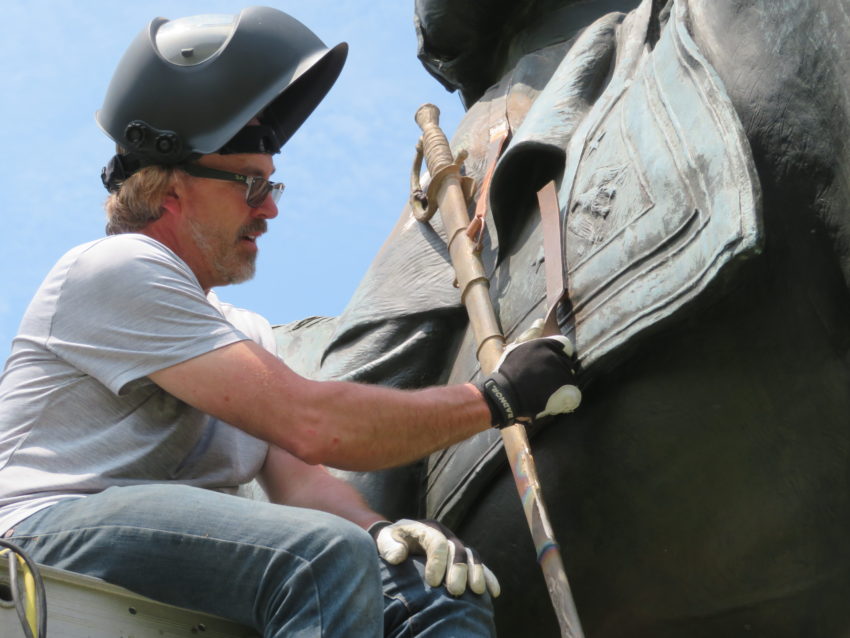
At some point during the lifetime of the sculpture the original sword was removed or taken. Conservator Gwinner welded the new bronze sword and copper hanging straps which had been sculpted by Podnar based on historic images using the Tungsten Inert Gas (TIG) welding process. Conservator Simms then repatinated and waxed the final piece.
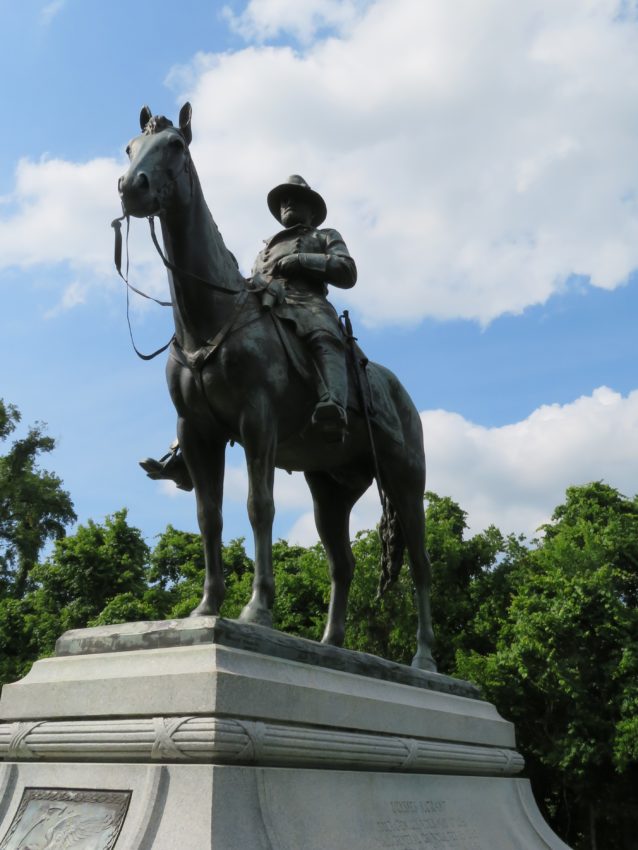
The restoration of the military monuments continued with several more figures. Some of the monuments included: Union General John A. McClernand, who had an interesting relationship with Grant, or by modern standards a “frenemy“, and Union Navy Officers, Charles Henry Davis and Andrew Hull Foote, who flank two sides of the Naval Memorial which is a large obelisk standing two hundred feet into the air.
The condition issues were largely similar: broken tips of swords or missing swords and hanging straps, reins, and rings. For General McClernard, a small ring was also fabricated onsite to attach the sword to an existing hanging strap. The new bit was attached with a threaded pin on the proper left side of the horse’s mouth. New reins were measured and cut; they were gently shaped to match the original reins.
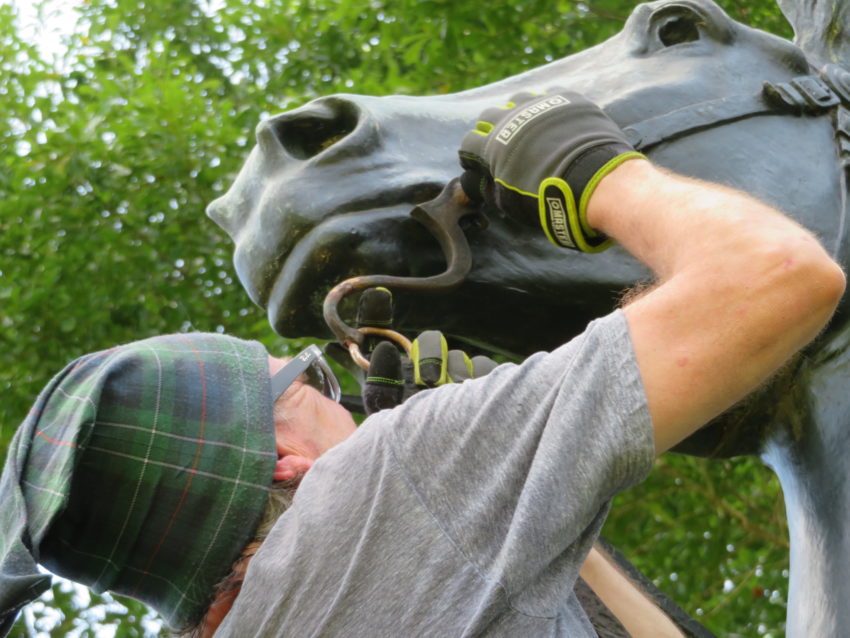
Reins were secured with rings on the bit and then further attached by welding the new reins to the existing ones on the proper left side of the horse. Metal joins were chased to a flush surface then repatinated and a protective wax coating applied with heat.
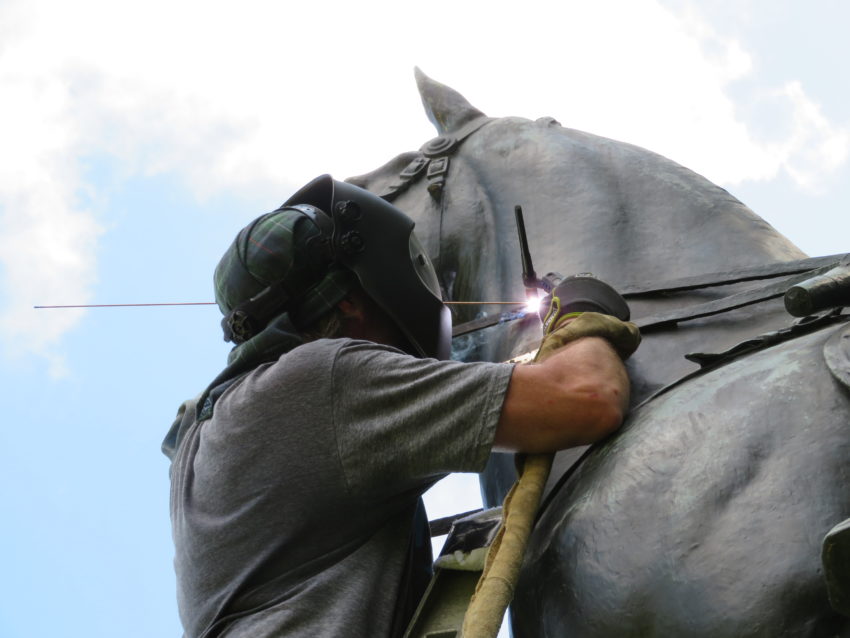
While Davis had his original sword returned, Foote received a new sword. The latter sword had to be cut onsite in order fit into the hand of Foote.
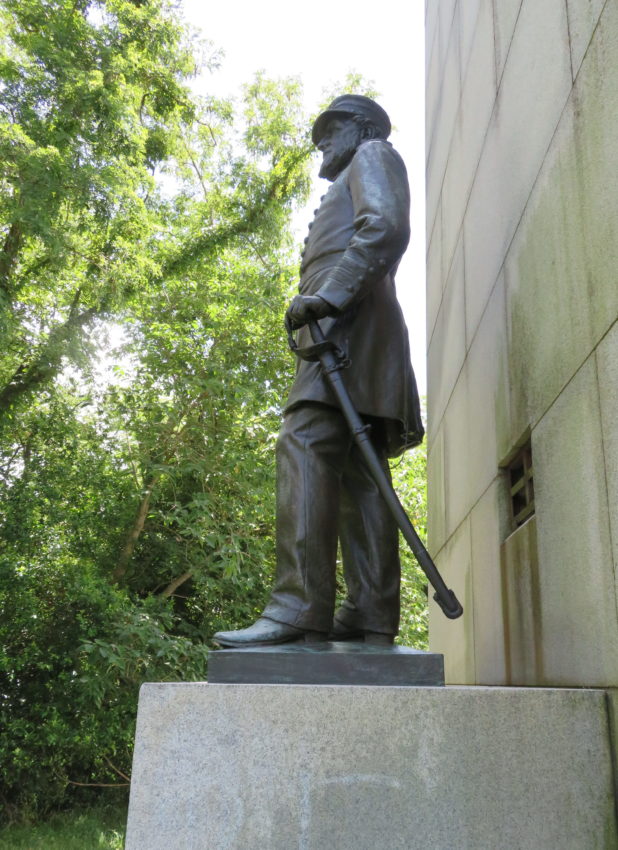
Both figures received new hanging straps which were carefully bent onsite to recreate the natural look of leather that were then patinated and a protective wax coating was applied with heat. The process was repeated on several other sculptures on the park until each affected monument appeared as it did originally with all components intact.
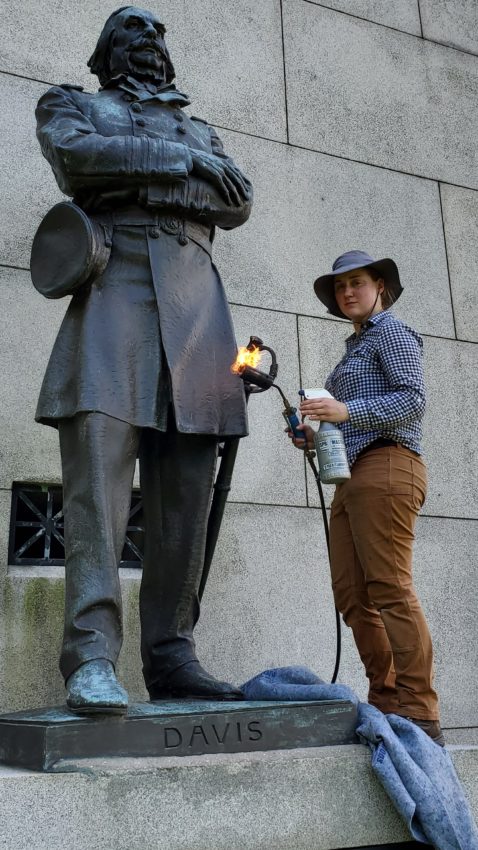
While the new accouterments from the restoration of military monuments project are stable, the repairs, like the original components, will not withstand climbing by visitors who wish to have a better photo opportunity. So for those individuals who patron our cultural institutions, museums, and National Parks, please consider using a zoom lens to take a closer look, or perhaps, explore more creative ways to enjoy works of art . After all, one does not have to touch to enjoy it.
The Vicksburg National Military Park was established in 1899, and it is open to all visitors. Visit the official website for updates and to plan a visit today.
